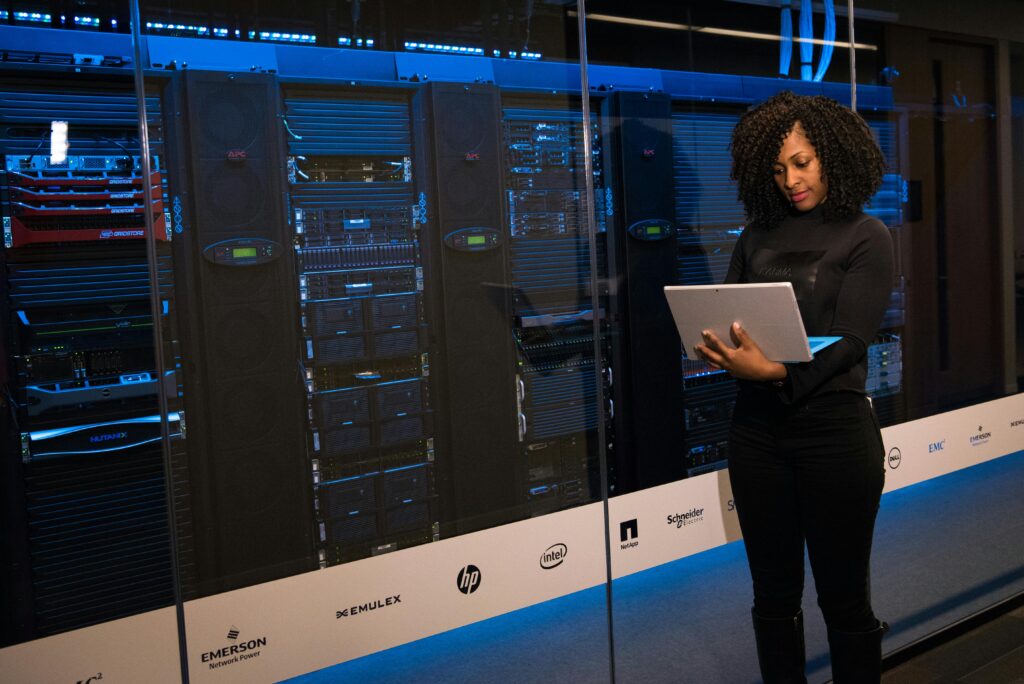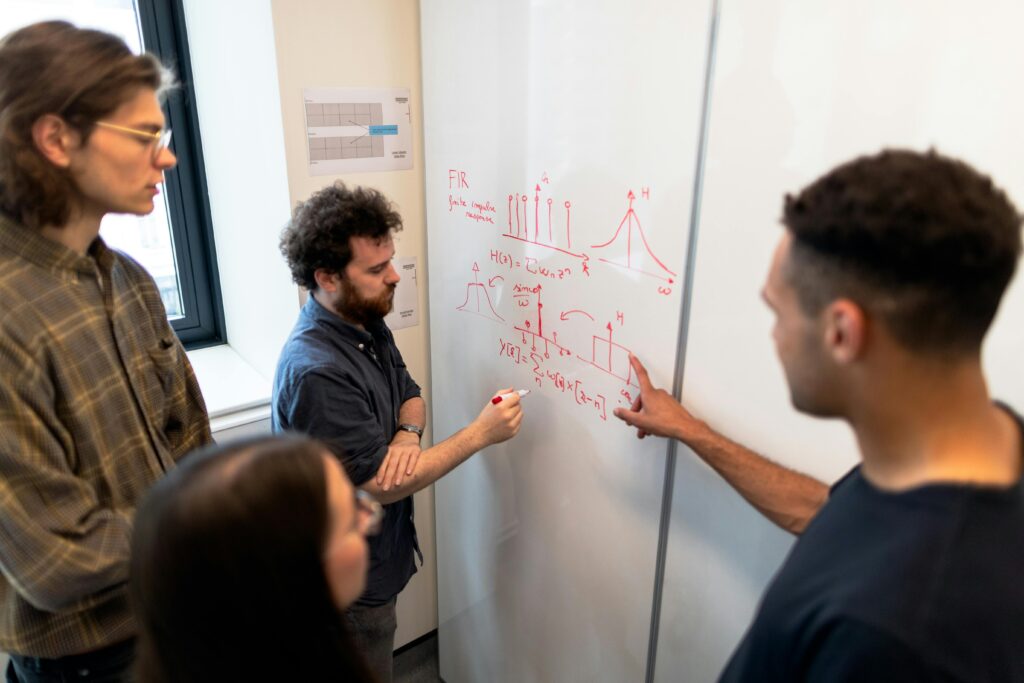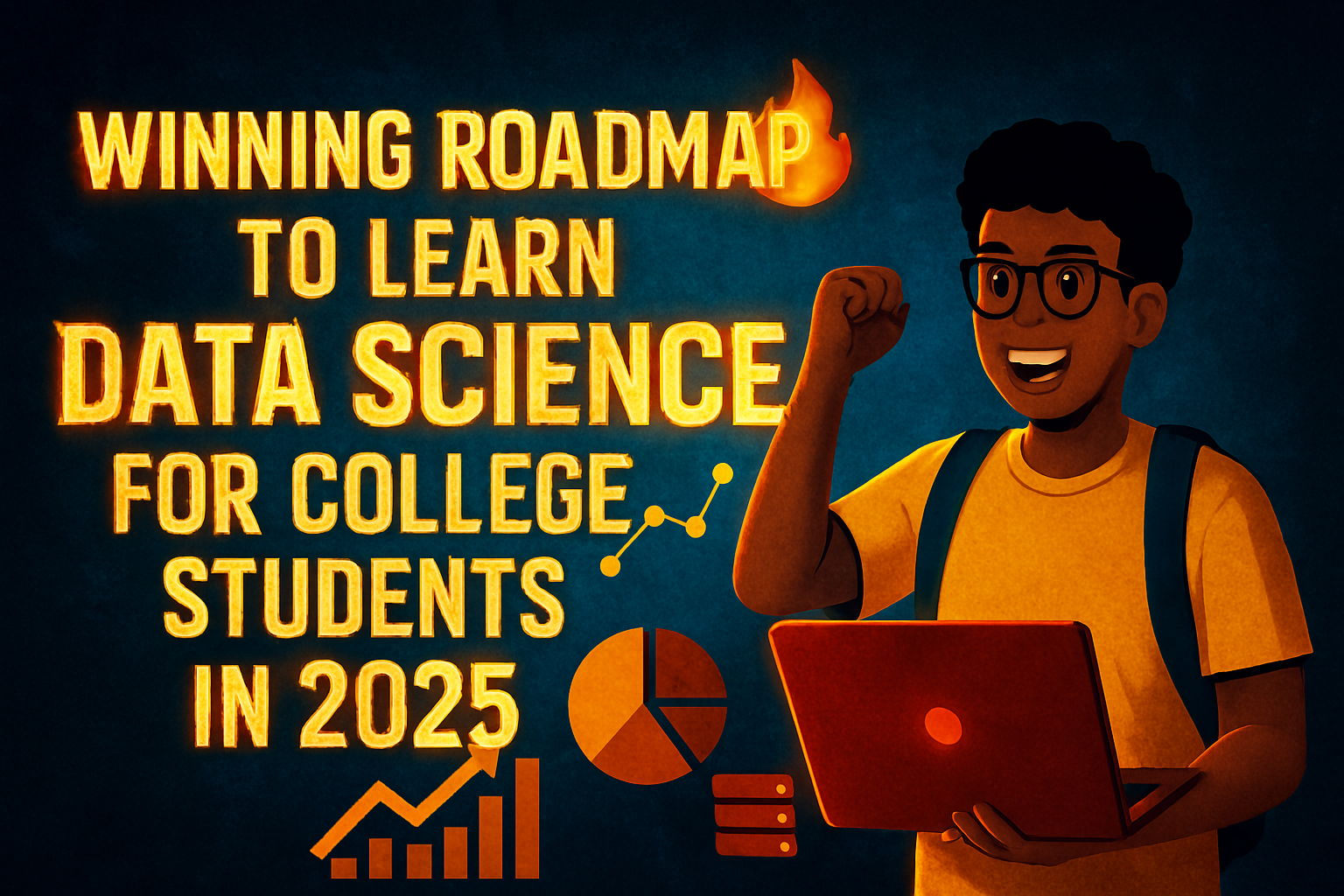Introduction
In today’s digital era, data science has become one of the most sought-after fields across the globe. From personalized recommendations on Netflix to accurate weather predictions and even fraud detection in banking, data science is silently powering the systems we rely on every day. As a college student, understanding the value and potential of data science early on can open doors to exciting career opportunities.
Unlike traditional fields, data science blends mathematics, statistics, computer programming, and domain knowledge to extract insights from data. It’s not just about crunching numbers; it’s about telling stories with data and making smarter decisions across industries. This is what makes it so appealing—and powerful.
For college students exploring future-ready careers, learning data science offers a clear edge. It not only strengthens your analytical mindset but also equips you with skills that are in high demand in the job market. Whether you’re from a computer science background or not, starting your data science journey in college is both doable and rewarding.
This roadmap will guide you through each step, from building strong foundations to landing internships and projects. If you’re curious about how data science works and want to stand out in the tech world, you’re in the right place.
Understanding What Data Science Is

Data science is the art and science of extracting meaningful insights from large volumes of data. It combines elements of statistics, computer science, and domain expertise to help businesses and organizations make informed decisions. In simple terms, data science is what turns raw data into valuable knowledge.
Every time you shop online, scroll through social media, or use a GPS app, data is being generated. This data, when analyzed properly, can reveal patterns, trends, and behaviors. That’s where data science comes in. It helps companies understand their customers, predict future trends, improve operations, and even develop new products or services.
One of the key strengths of data science is its versatility. It’s used in healthcare to predict disease outbreaks, in finance to detect fraud, in marketing to understand customer preferences, and in sports to optimize team performance. As a result, data science has become an essential part of almost every industry.
What makes data science truly unique is its ability to bring together structured data, like numbers in spreadsheets, and unstructured data, like images, videos, and text. Through tools like machine learning and artificial intelligence, data science turns this data into actionable insights that drive real-world results.
For students and beginners, understanding what data science is lays the foundation for everything that follows. It’s not just a technical field—it’s a mindset of curiosity, problem-solving, and continuous learning. As we move forward in this guide, you’ll discover how data science works, what tools and skills are needed, and how you can start building your own path in this exciting domain.
Step 1: Build a Strong Foundation in Math & Stats
The journey into data science begins with a solid understanding of mathematics and statistics. These two subjects form the backbone of most techniques and algorithms used in data analysis and machine learning. Without them, it’s difficult to grasp how data models work or why they make certain predictions.
Key areas of math that are especially useful in data science include linear algebra, calculus, and probability. Linear algebra helps with understanding how data is represented in matrices and vectors, which is crucial when working with machine learning algorithms. Calculus plays a role in optimizing models, especially in tasks involving neural networks. Meanwhile, probability and statistics are essential for interpreting data, measuring uncertainty, and making accurate predictions.
You don’t need to be a math genius to succeed in data science, but you do need a good grasp of the fundamentals. Start by learning basic concepts such as mean, median, variance, standard deviation, probability distributions, correlation, and hypothesis testing. These are the building blocks of any data-driven analysis.
As a college student, you can take advantage of free or affordable online courses, textbooks, and tutorials to strengthen your foundation. Practicing problems regularly and applying concepts through small data projects can also help reinforce your understanding.
Remember, data science is not just about coding—it’s about reasoning with data. Math and stats give you the tools to think critically, analyze data effectively, and communicate your findings with confidence. So before diving into complex algorithms or tools, make sure your mathematical base is strong. It will pay off in every step of your data science journey.
Step 2: Learn Programming (Python/R)
Once you’ve built a strong foundation in math and statistics, the next step in your data science journey is to learn programming. Programming allows you to manipulate data, build models, automate processes, and extract insights efficiently. For data science, the two most popular languages are Python and R.
Python is widely regarded as the top choice for beginners due to its simple syntax, readability, and vast ecosystem of libraries. Libraries like NumPy, Pandas, Matplotlib, and Scikit-learn make it incredibly easy to perform data manipulation, visualization, and machine learning. Whether you’re cleaning messy data or building a predictive model, Python has tools that simplify the process.
R, on the other hand, is excellent for statistical analysis and data visualization. It’s heavily used in academia and research and comes with a rich set of packages for statistical modeling and hypothesis testing. If your focus is more on deep statistical work or you’re involved in academic projects, R can be a great option. For beginners, the Python for Everybody course by University of Michigan is an excellent way to start learning Python with real-world applications.
As a college student starting out in data science, Python is usually the better language to begin with due to its flexibility and widespread use in industry. You don’t need to master everything at once—start with basic programming concepts like variables, loops, conditionals, and functions. Then gradually move into data structures, file handling, and working with libraries specific to data analysis.
Plenty of online platforms offer beginner-friendly Python and R tutorials specifically designed for data science. As you learn, try to apply your skills to small datasets to make the concepts stick. The goal isn’t just to write code, but to solve real problems with it. Programming is a key skill in data science, and mastering it early will accelerate your learning throughout the roadmap.
Step 3: Get Comfortable with Data Handling

Learning to handle data effectively is a core skill in data science. Before you can analyze or model anything, you need to know how to collect, clean, explore, and transform data. Raw data is often messy, incomplete, or inconsistent, and knowing how to prepare it is what separates beginners from true data practitioners.
Data handling starts with understanding the different formats data can come in—CSV files, Excel sheets, JSON, SQL databases, and even web APIs. As a data science student, you should become comfortable reading and writing data in these formats using tools like Python’s Pandas library or R’s tidyverse packages.
Cleaning data involves tasks like dealing with missing values, removing duplicates, fixing data types, and handling outliers. These steps are crucial because even the best machine learning models will fail if fed poor-quality data. You’ll also learn how to filter data, group and summarize information, and merge different datasets—a common need in real-world projects.
Exploratory data analysis (EDA) is another important part of data handling. It helps you understand the structure, patterns, and anomalies within your data using basic statistics and visualizations. This step lays the groundwork for deeper analysis and modeling later in your data science journey.
Databases also play a big role, especially SQL, which is the standard language for querying structured data. Knowing how to extract relevant information from large datasets using SQL is a skill every data scientist should have. To go deeper, the Pandas Documentation offers clear explanations and examples.
Data handling may not sound glamorous, but it’s one of the most time-consuming and vital stages in any data science project. Mastering it early on ensures you’re equipped to work with real-world datasets and sets the stage for more advanced topics like machine learning and data storytelling.
Step 4: Learn Data Visualization
Data visualization is one of the most powerful tools in data science. It transforms raw numbers into meaningful visuals that help you understand patterns, trends, and outliers quickly. More importantly, it allows you to communicate your findings clearly to others—especially those without a technical background.
For college students starting their data science journey, learning to visualize data is a game-changer. Whether you’re exploring a dataset for insights or presenting the results of a model, the way you display your data can make all the difference. A well-designed chart can tell a story that tables or statistics alone cannot.
Python offers several popular libraries for data visualization. Matplotlib is a great starting point and gives you control over basic plots like bar charts, line graphs, and histograms. Seaborn builds on Matplotlib and provides more advanced visuals with cleaner aesthetics. For interactive dashboards and web-based visuals, Plotly is an excellent tool.
If you’re using R, ggplot2 is the go-to package for creating beautiful and informative graphics with minimal code. It’s widely used in academia and is known for its consistency and flexibility. You can explore the Seaborn Tutorial on official site to learn how to create visually appealing plots easily.
Good data visualization isn’t just about making pretty graphs—it’s about making your data easier to understand. That means choosing the right type of chart, labeling your axes clearly, and avoiding clutter. The goal is always clarity and insight.
As you grow in data science, you’ll use visualizations not just in exploration, but also in model evaluation, reporting, and decision-making. Practice by visualizing real datasets, comparing categories, exploring distributions, and highlighting key insights. The more you do it, the better you’ll get at spotting meaningful stories hidden in your data.
Step 5: Master Machine Learning Basics
Machine learning is a core part of data science that gives your projects the ability to learn from data and make predictions. It’s the technology behind things like recommendation engines, spam filters, voice assistants, and even self-driving cars. As a college student entering the world of data science, learning the basics of machine learning is a crucial step that opens up countless possibilities.
At its heart, machine learning is about building models that can recognize patterns and make decisions without being explicitly programmed. These models are trained on historical data and then tested on new data to evaluate their accuracy. There are three main types of machine learning: supervised, unsupervised, and reinforcement learning. As a beginner, your focus should be on supervised and unsupervised learning.
In supervised learning, you teach the model using labeled data—for example, predicting house prices based on size and location. Common algorithms here include linear regression, logistic regression, decision trees, and support vector machines. In unsupervised learning, the model finds hidden patterns in data without any labels—clustering similar customers or reducing dimensions with techniques like K-means and PCA.
Python’s Scikit-learn library is perfect for beginners. It offers easy-to-use implementations of many popular machine learning algorithms and comes with built-in tools for training, testing, and evaluating models. Understanding concepts like overfitting, underfitting, cross-validation, and model accuracy is essential as you progress. The Scikit-learn User Guide is a great resource to understand how each algorithm works with examples.
Don’t rush into deep learning just yet. Focus on mastering the core ideas of machine learning first, as they form the foundation of more advanced topics. Work on small projects like predicting student grades, classifying emails, or clustering customers to reinforce your learning. Building these skills early will make you a confident and capable data science practitioner in the long run.
Step 6: Practice with Real Datasets

Learning data science isn’t just about theory—it’s about applying your skills to real-world problems. That’s why practicing with real datasets is one of the most important steps in your data science journey. It helps you move beyond textbook examples and understand how to deal with messy, imperfect, and complex data—just like you would in a real job.
Working with actual datasets allows you to apply everything you’ve learned so far: data cleaning, exploration, visualization, and even basic machine learning. It helps you develop a problem-solving mindset, which is key in data science. When you work on real data, you also start to think more critically—asking the right questions, testing assumptions, and interpreting results.
Platforms like Kaggle, UCI Machine Learning Repository, and Data.gov offer thousands of free datasets you can download and explore. From predicting housing prices and analyzing sales trends to understanding climate data or sports statistics, the possibilities are endless. These platforms also host competitions where you can test your models against others and learn from their approaches.
Start with small projects. For example, analyze a dataset on student performance or visualize COVID-19 trends. Try building a simple machine learning model to predict something based on historical data. Document your process, challenges, and learnings. This not only improves your skills but also builds content for your portfolio.
Remember, the more you practice with real datasets, the more confident you’ll become. You’ll start seeing patterns, noticing common data issues, and discovering better ways to tell stories with data. This hands-on experience is what truly transforms you from a learner into a data science practitioner ready to tackle real-world problems.
Step 7: Explore Deep Learning (Optional but Valuable)
Deep learning is an advanced area within data science that focuses on algorithms inspired by the structure and function of the human brain—known as neural networks. While not mandatory for beginners, exploring deep learning can give you a competitive edge and unlock powerful tools for solving complex problems.
Deep learning is especially useful in areas like image recognition, natural language processing, speech translation, and recommendation systems. It allows computers to process and learn from unstructured data such as images, audio, and text with remarkable accuracy. For example, virtual assistants, facial recognition systems, and language translation apps are all powered by deep learning.
As a college student, you don’t need to master deep learning right away. However, once you’re comfortable with basic machine learning, it’s worth exploring. Start by learning how neural networks work—understanding layers, activation functions, forward and backward propagation, and loss functions.
Popular frameworks like TensorFlow and Keras (both in Python) make it easier for beginners to build and train deep learning models. These libraries handle much of the complex math behind the scenes, allowing you to focus on designing models and experimenting with data.
To get started, try simple projects like classifying handwritten digits using the MNIST dataset or building a sentiment analysis model for text. These projects help you understand how deep learning differs from traditional machine learning and what its capabilities are.
While deep learning may not be required for every data science role, having even a basic understanding of it can set you apart. It shows that you’re curious, up-to-date with industry trends, and ready to take on more challenging tasks. Think of deep learning as a bonus skill—optional but highly valuable as you grow in your data science career.
Step 8: Version Control & Collaboration
As you progress in your data science journey, working on larger projects—especially with others—becomes more common. That’s where version control and collaboration tools come in. These skills may seem secondary at first, but they’re essential for any serious data science workflow.
Version control, primarily through Git, allows you to track changes in your code, experiment safely, and revert to previous versions if something breaks. It’s like having an undo button for your entire project. Whether you’re cleaning data, testing a new model, or updating a notebook, version control keeps your work organized and recoverable.
GitHub is the most widely used platform for hosting code and collaborating on projects. It allows you to share your work publicly or privately, receive feedback, and contribute to open-source repositories. As a data science student, maintaining a GitHub profile with your projects showcases your coding skills, thought process, and commitment to learning.
Collaboration is another key aspect. In the real world, data science is rarely a solo task. You might work with other data scientists, developers, analysts, or business stakeholders. Tools like GitHub make it easier to work in teams—assigning tasks, managing issues, and reviewing each other’s code.
Learning Git may feel technical at first, but there are beginner-friendly resources and tutorials available. Start small: create a GitHub repository for your first project, push your code, and write a readme to explain your work. Over time, using Git and GitHub will become second nature.
By embracing version control and collaborative tools early, you’ll not only improve your workflow but also develop habits that align with how professionals operate in the data science industry. These skills may not involve data directly, but they’re crucial for long-term success.
Step 9: Build a Portfolio & Resume
Building a strong portfolio and resume is a crucial step for anyone aspiring to start a career in data science. It’s your opportunity to showcase not just what you know, but how you apply your skills to real-world problems. For college students, a well-crafted portfolio can make a huge difference when applying for internships, projects, or your first job.
Your data science portfolio should include projects that reflect a range of skills—data cleaning, analysis, visualization, and machine learning. These don’t need to be complex or flashy. What matters most is that each project clearly demonstrates your problem-solving approach, understanding of data, and ability to draw insights. For example, a project analyzing movie reviews or predicting house prices using real datasets can be just as impressive as a deep learning model if it’s well-executed and clearly explained.
Host your projects on GitHub with clean code, proper documentation, and a descriptive readme file. You can also go a step further and create a personal website or blog to present your work in a more visual and accessible way. Tools like Notion, WordPress, or GitHub Pages make this easy, even for beginners.
When it comes to your resume, tailor it to highlight your technical skills, tools you’ve worked with (like Python, Pandas, Scikit-learn, or SQL), and relevant coursework or certifications. Mention your portfolio projects with short summaries and outcomes, and include links if possible.
Remember, employers look for real experience—not just degrees. A strong portfolio combined with a clear, concise resume shows that you’re serious about data science and ready to contribute from day one. Start building now, and keep updating as you learn new skills and complete new projects.
Step 10: Internship & Job Hunting Tips
Landing your first internship or job in data science can feel challenging, especially as a college student. But with the right approach and preparation, you can stand out and make your way into the industry. This step is all about applying what you’ve learned and presenting yourself as a job-ready candidate.
Start by identifying companies or startups that are hiring data science interns or junior analysts. Look for opportunities on platforms like LinkedIn, Internshala, Kaggle Jobs, and company career pages. Don’t just wait for openings—be proactive. Reach out to recruiters or professionals on LinkedIn with a short, polite message expressing your interest and linking your portfolio or GitHub profile.
Customize your resume for each application. Highlight the most relevant projects and skills based on the job description. Include keywords like data analysis, machine learning, Python, and data visualization, but only if you’ve actually worked with them. Pair this with a short, focused cover letter that tells your story—why you’re interested in data science and what makes you a good fit.
Contribute to open-source data science projects if you can. It’s a great way to gain real-world experience, work in teams, and learn from others. Participating in data competitions on Kaggle or analytics hackathons also helps you sharpen your skills and get noticed by recruiters.
Prepare for interviews by practicing common data science questions—ranging from basic statistics and Python to scenario-based problems. Be ready to walk through your projects, explain your approach, and discuss challenges you faced.
Remember, consistency is key. Keep learning, keep applying, and don’t get discouraged by rejections. Each application is a step closer to your first break. With a strong foundation and a proactive mindset, your path into the data science field is well within reach.
Top Resources for Data Science Learning
With so many learning platforms available today, finding quality resources for data science can feel overwhelming. As a college student, it’s important to choose tools that are both beginner-friendly and practical. Whether you prefer structured courses, hands-on practice, or self-paced reading, there’s something out there to fit your style.
Online Learning Platforms are a great place to start. Websites like Coursera, edX, Udemy, and DataCamp offer full-length data science courses created by top universities and industry experts. These courses cover topics like Python, statistics, machine learning, and data visualization. Many also include real-world projects and quizzes to help reinforce your skills.
For free, high-quality learning, YouTube channels like freeCodeCamp, Krish Naik, and StatQuest explain complex topics in a very simple and visual way. They’re perfect for brushing up on specific concepts or exploring new topics without any cost.
Books are another valuable resource. Titles like “Python for Data Analysis” by Wes McKinney, “Hands-On Machine Learning with Scikit-Learn, Keras, and TensorFlow” by Aurélien Géron, and “Practical Statistics for Data Scientists” are excellent for building deeper knowledge.
Don’t overlook documentation and official tutorials. Tools like Pandas, Scikit-learn, TensorFlow, and Plotly all offer well-written guides and examples that help you understand how to use them effectively in projects.
If you’re looking for datasets to practice, Kaggle, UCI Machine Learning Repository, and Google Dataset Search are great places to find real-world data. Kaggle also provides notebooks and kernels created by other users—making it easier to learn by example.
The key is to stay consistent and choose resources that match your current level. Mix theory with hands-on practice, and over time, you’ll build the confidence and skills needed to thrive in the world of data science.
Common Mistakes to Avoid
As you begin your journey into data science, it’s easy to fall into certain traps that can slow your progress or make learning more difficult than it needs to be. Being aware of these common mistakes will help you stay focused, build strong habits, and move forward with confidence.
One of the biggest mistakes is focusing only on theory and not practicing enough. Data science is a hands-on field. You might understand concepts like regression or classification in theory, but until you apply them to real data, they won’t fully click. Always complement your learning with practical projects or exercises.
Another common issue is trying to learn everything at once. The data science field is vast—machine learning, deep learning, data engineering, NLP, and more. Trying to master everything at the same time can lead to burnout. Instead, follow a clear roadmap and focus on one skill at a time.
Many beginners also ignore the importance of data cleaning and preprocessing. It’s easy to jump straight into modeling, but real-world data is messy. Skipping this step can result in poor outcomes, even if your algorithms are solid. Learning how to handle, clean, and explore data is a must.
Some learners also underestimate the value of communication. Knowing how to code isn’t enough—you need to be able to explain your process and results clearly, whether through visualizations, reports, or presentations. Data storytelling is a critical skill in data science roles.
Lastly, don’t let impostor syndrome hold you back. It’s normal to feel like you don’t know enough, especially when comparing yourself to others online. Progress in data science takes time and consistency. Keep learning, keep building, and trust your journey.
Avoiding these mistakes early on can save you time and frustration, and set you up for long-term success in data science.
Conclusion

Data science is more than just a buzzword—it’s a powerful and evolving field that blends creativity, logic, and technology to solve real-world problems. For college students, getting started with data science early can open up exciting opportunities in industries like healthcare, finance, marketing, sports, and beyond.
This roadmap has walked you through the essential steps: from mastering math and programming to working with real datasets, building models, and even preparing for your first job. Every stage is designed to help you grow steadily, with a focus on practical skills and real-world application.
The key takeaway? You don’t need to be an expert to begin. All you need is curiosity, consistency, and a willingness to learn by doing. Start small, take on mini-projects, keep practicing, and gradually expand your skills. Whether you’re analyzing sales data, predicting outcomes, or building dashboards, each project adds to your knowledge and builds your confidence.
Also, don’t forget the importance of community. Join online forums, participate in competitions, and collaborate with others. The data science world thrives on shared learning, and you’ll gain more by connecting with peers and mentors.
In the end, your data science journey is unique—and it’s okay to move at your own pace. Use this roadmap as a guide, stay updated with industry trends, and keep exploring new tools and techniques. With the right mindset and consistent effort, you can turn your interest in data science into a meaningful, future-ready career.
Also Read: The 2025 Cloud Computing Revolution: Whats Students Must Master.
FAQs
1. Can I learn data science without a technical background?
Yes, absolutely. While having a background in math or programming can help, many data scientists come from fields like business, economics, biology, or social sciences. Start with the basics—math, Python, and data analysis—and build from there at your own pace.
2. How long does it take to become job-ready in data science?
It depends on your dedication and consistency. On average, 6 to 12 months of focused learning and project work is enough to build a strong foundation. If you’re learning alongside college studies, progress may be slower—but that’s perfectly okay.
3. Do I need to learn both Python and R?
Not necessarily. Python is the most widely used language in the data science industry and is recommended for beginners. R is great for statistical analysis and research but isn’t required unless your field specifically uses it.
4. Is a degree in data science necessary to get a job?
No, many data scientists are self-taught or come from related fields like computer science, engineering, or mathematics. What matters most is your practical skills, portfolio, and ability to solve real-world problems with data.
5. What are some good beginner projects for my portfolio?
Start with simple projects like predicting house prices, analyzing student scores, visualizing COVID-19 data, or classifying emails as spam or not spam. These projects demonstrate your understanding of core concepts and your ability to apply them.
6. Can I get a data science internship while still in college?
Yes, many companies offer internships for students with basic skills in data analysis, Python, and machine learning. Build a strong portfolio, participate in competitions, and apply to startups and research labs to get hands-on experience.
7. What tools should I focus on as a beginner?
Focus on Python, Pandas, NumPy, Matplotlib, Seaborn, Scikit-learn, and SQL. Once you’re comfortable, you can explore TensorFlow, Keras, and tools like Tableau or Power BI for data visualization.
A tech-driven content strategist with 6+ years of experience in crafting high-impact digital content. Passionate about technology since childhood and always eager to learn, focused on turning complex ideas into clear, valuable content that educates and inspires.

